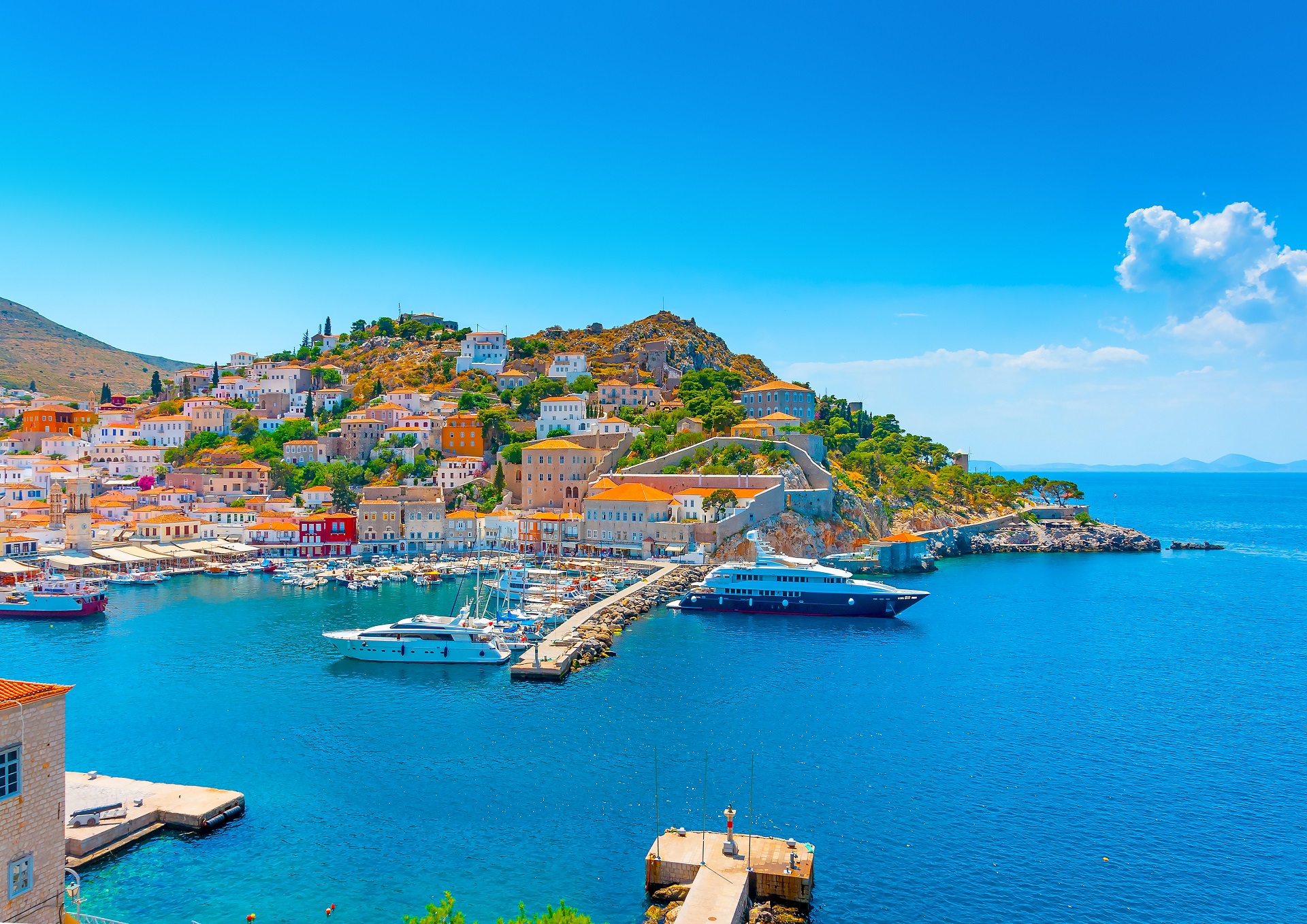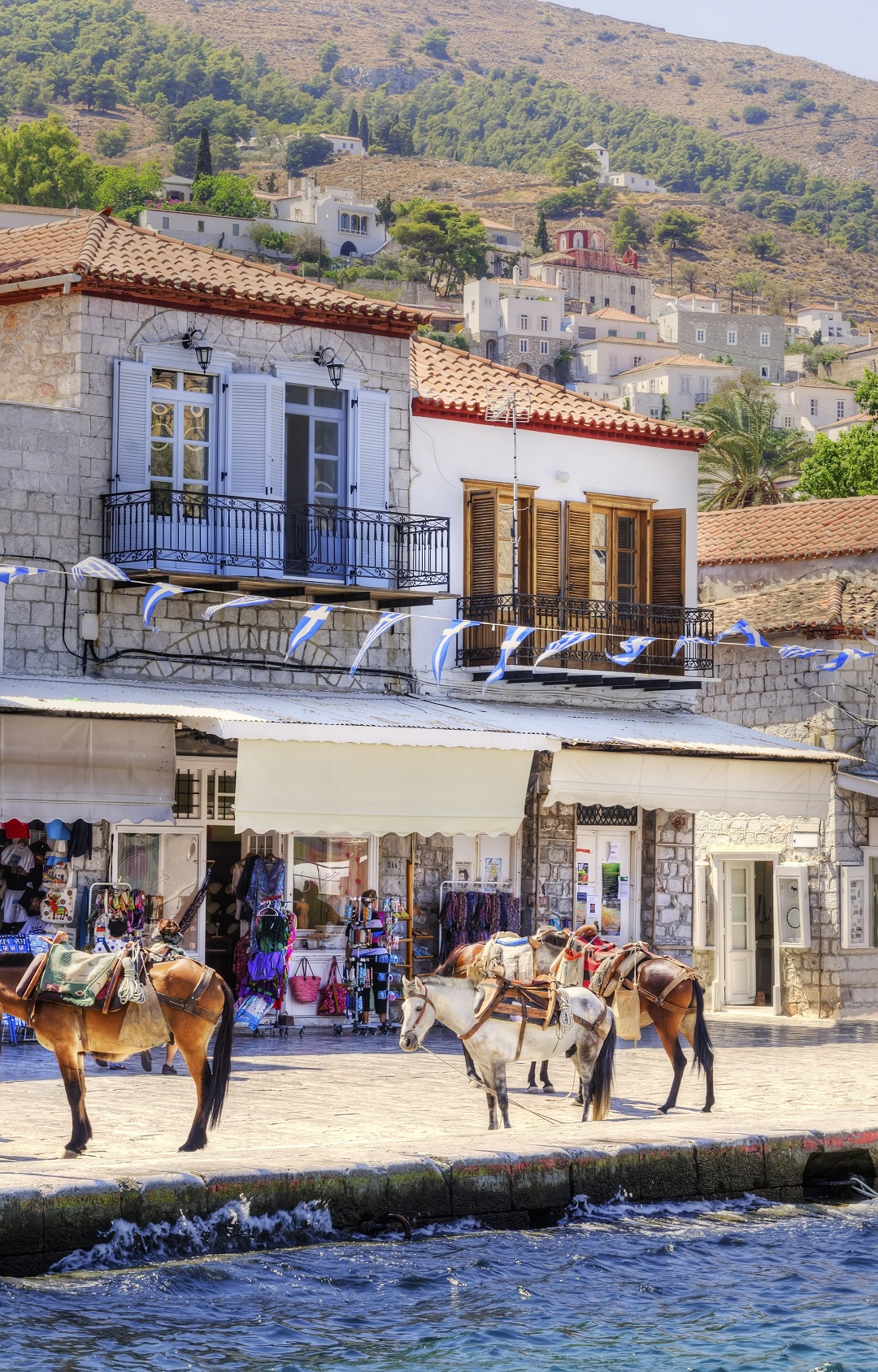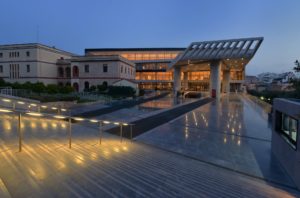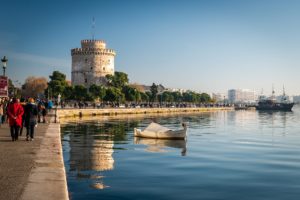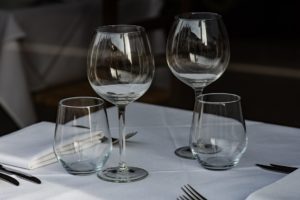Hydra (Greek: Ύδρα) is one of the Saronic Islands of Greece. It is located in the Aegean Sea between the Saronic Gulf and the Argolic Gulf.
A narrow strip of water separates the beautiful island from the Peloponnese. In ancient times, the island was known as Hydrea (Υδρέα, derived from the Greek word for “water”). Hydrea is a reference to the springs found on Hydra.
The municipality of Hydra is not just one island. It consists of the islands Hydra, Dokos and a few uninhabited islets and they have a total area of 64.443 km2. The province of Hydra was one of the provinces of the Piraeus Prefecture.
The main town is known as “Hydra port” (pop. 1,900 in 2011). It consists of a crescent-shaped harbor, surrounded by restaurants, shops, markets, and galleries that cater to tourists and locals (Hydriots). Steep stone streets lead up and outward from the harbor area. Most of the local residences, as well as the hostelries on the island, are located on these streets. Other small villages or hamlets on the island include Mandraki, Kamini, Vlychos, Palamidas, Episkopi, and Molos.
Transport, tourism, and leisure
Hydra depends on tourism, and Athenians account for a sizable segment of its visitors. High-speed hydrofoils and catamarans from Piraeus, some 37 nautical miles (69 km) away, serve Hydra. First, they stop at Poros, and after Hydra, they go to Spetses. There is also an alternative, a passenger ferry service from Peloponnese. This ferry service runs from Hydra Harbor to Metochi on the Peloponnese coast. Many Athenians drive to Metochi, leave their car in the secure car park, and take the 20-minute passenger ferry across to Hydra.
Rubbish trucks are the only motor vehicles on the island. By law, cars and motorcycles are not allowed. Horses, mules and donkeys, and water taxis provide public transportation. The inhabited area, however, is so compact that most people walk everywhere.
Hydra benefits from numerous bays and natural harbors and has a strong maritime culture. The island is a popular yachting destination and is the home of the Kamini Yacht Club, an international yacht club based in the port of Kamini.
In 2007, a National Geographic Traveler panel of 522 experts rated Hydra the highest of any Greek island (11th out of 111 islands worldwide) as a unique destination preserving its “integrity of the place.”
There are numerous churches and six Orthodox monasteries on the island. Two of the monasteries are particularly noteworthy. It is Profitis Ilias, founded in the 10th century, and Ayia Efpraxia. Both are on a hill overlooking the main harbor.
The island’s cathedral is the old Monastery of the Dormition of the Virgin and sits on the quayside in the town. The monastery contains the tomb of Lazarus Kountouriotis. He was the wealthiest sea captain on Hydra and gave his entire fortune to support the Greek War of Independence.
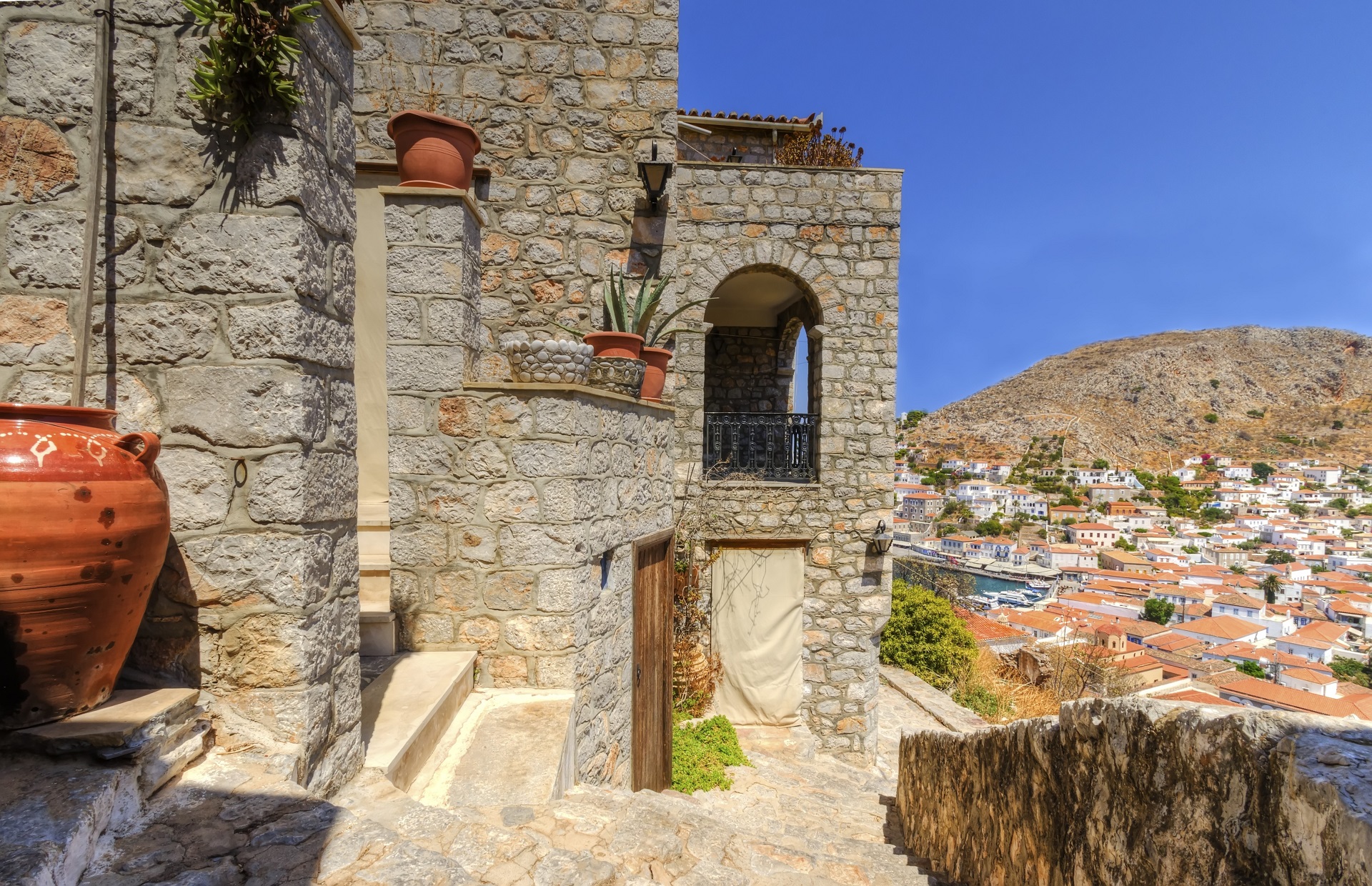
Arrive
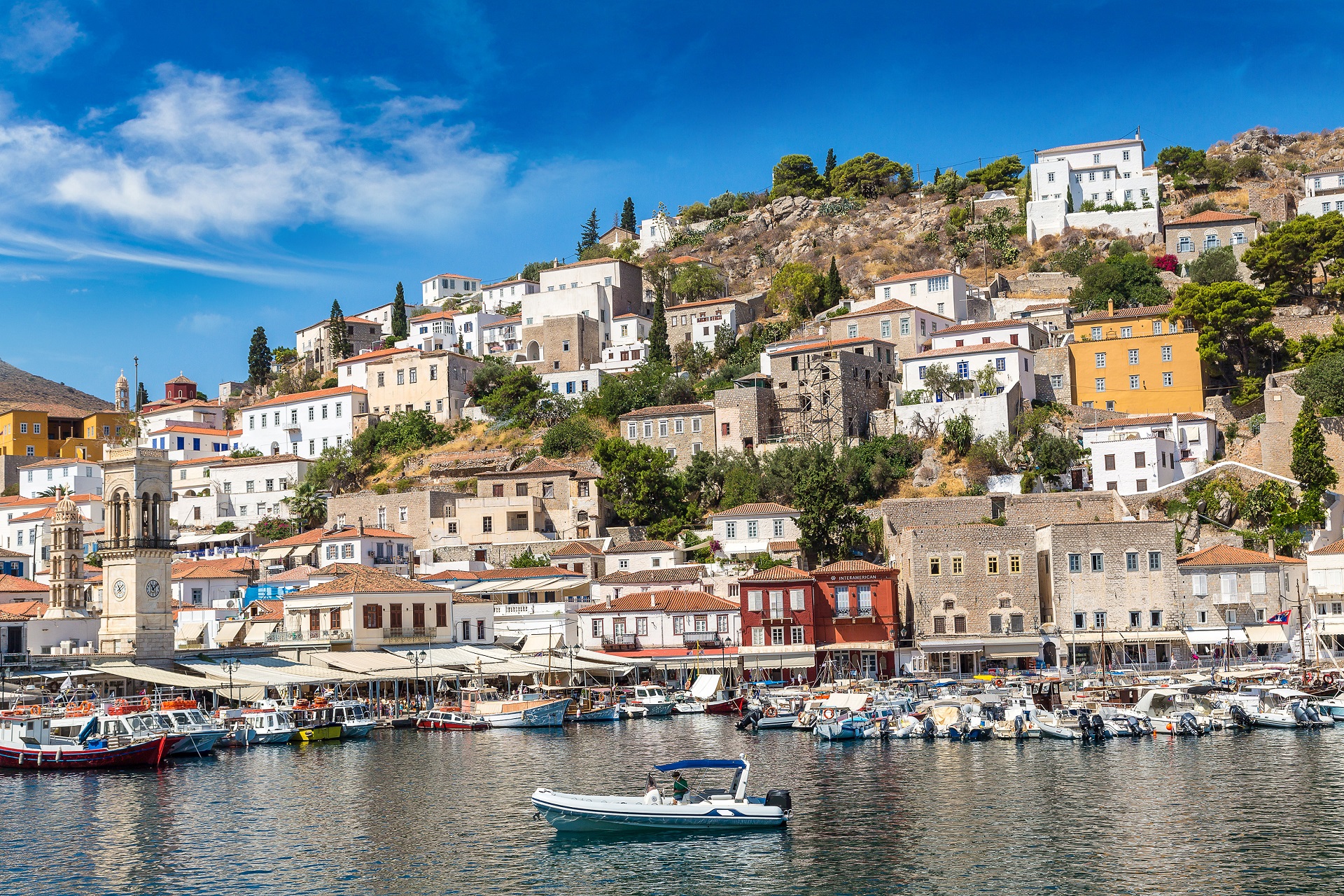
Getting to Hydra is much easier these days than in years past. Take a flying dolphin or cat from Piraeus or travel to Metoxi on the mainland and take a sea taxi or shuttle across the Saronic.
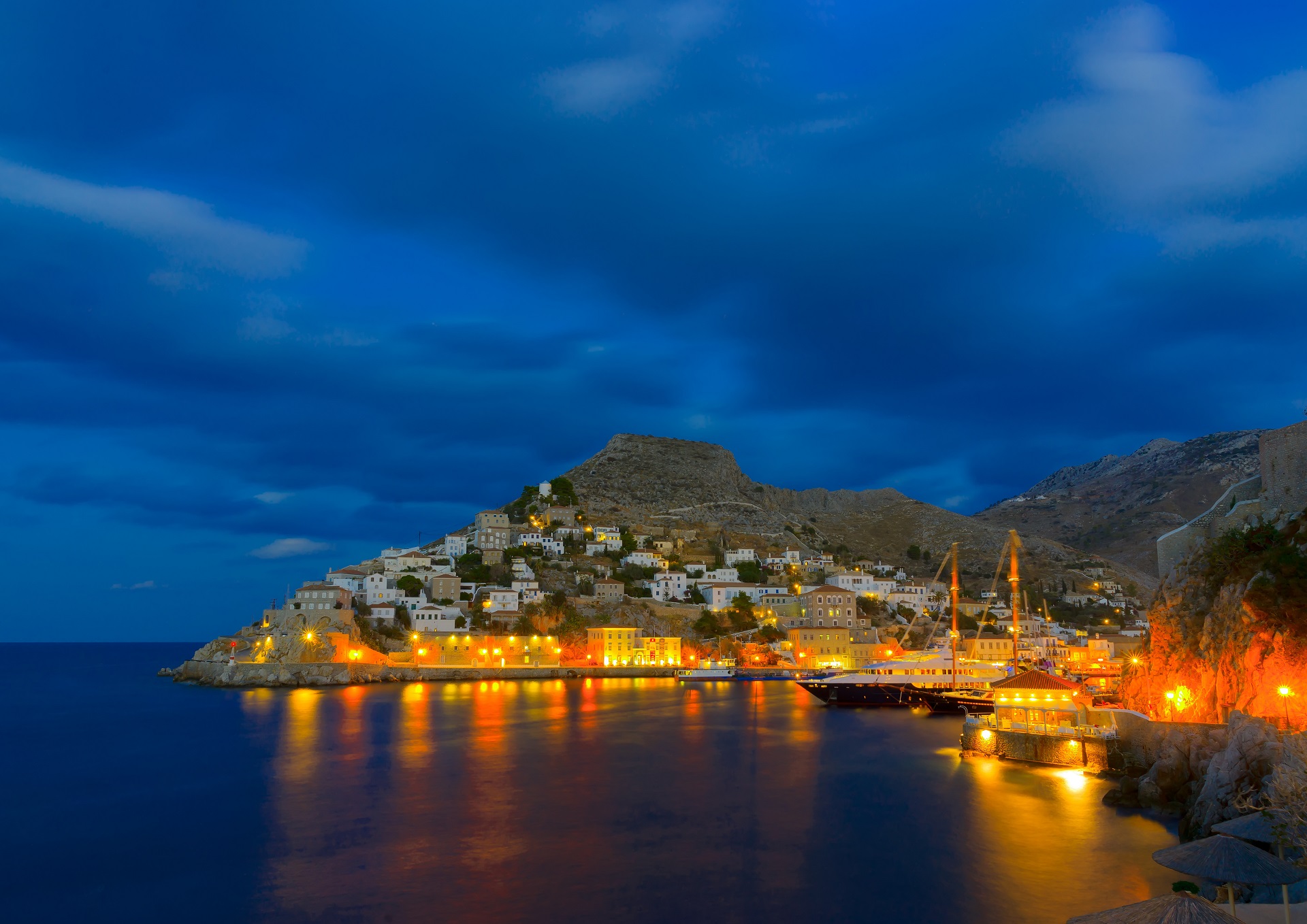
Stay
Hydra offers visitors a wealth of options for accommodation. Both in the heart of the harbor or the more secluded hamlets and villages surrounding the Hydra Town. Some are offering glorious views of the sea and sunset, some lower down with little or no climb. The choices are plenty, so you’ll find accommodation to suit your budget. There are basic pensions and rooms to upscale guesthouses and boutique hotels, to private houses and apartments catering to all levels of comfort.
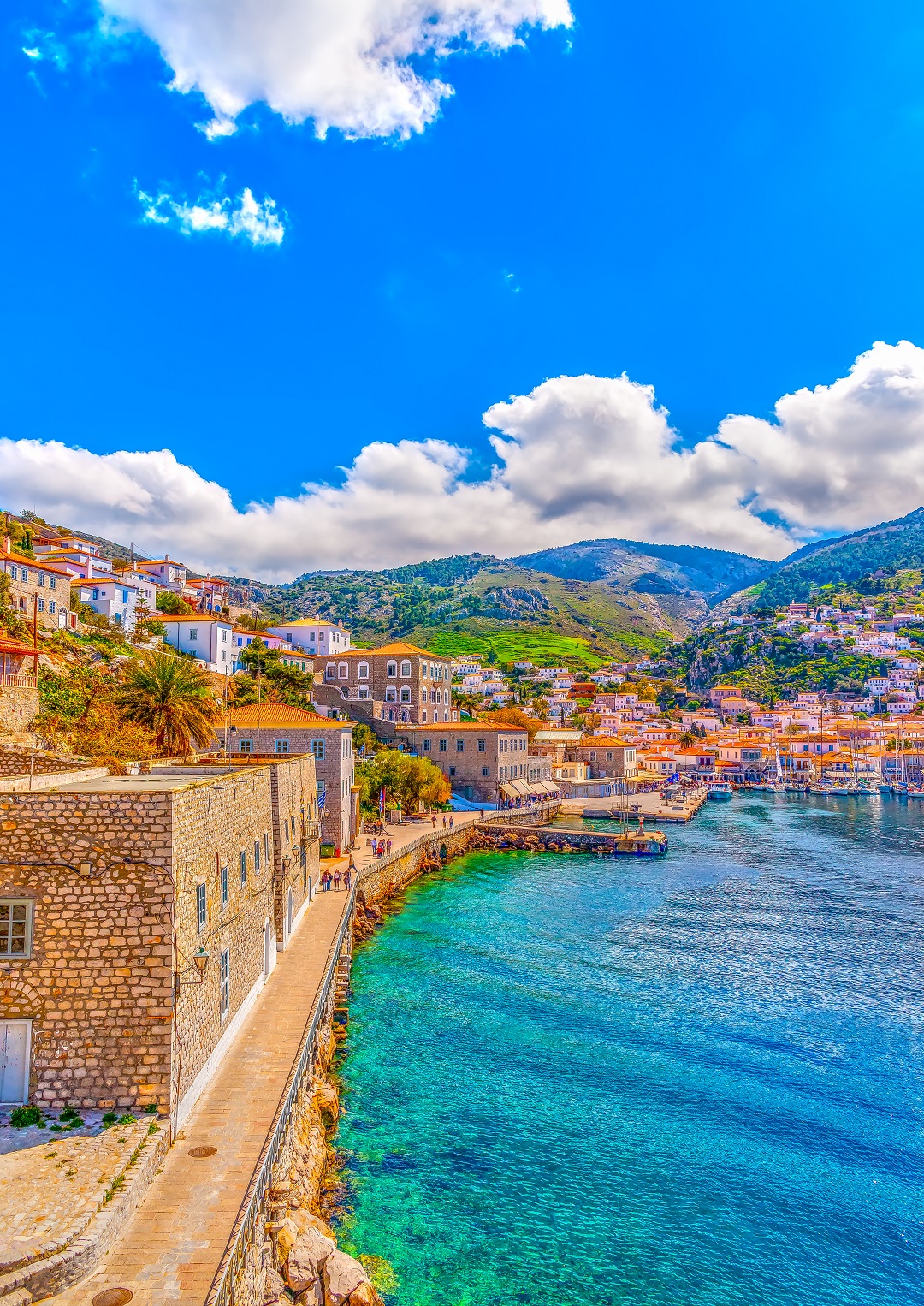
Eat & Drink
Options for eating and drinking have exploded in recent years. They range from traditional Greek fare to Italian and Continental cuisine, to ethnic street food and take away souvlaki. You won’t get bored with your choices!
Shop
Strolling along the harbor or wandering through the town’s side and back streets, you encounter dozens of boutiques. They offer clothing, shoes, jewelry, handbags, scarves, you name it, all at the height of fashion. In other shops, you’ll find unique crafts, textiles, and objects for your home or to take back as a gift.
Hydra port
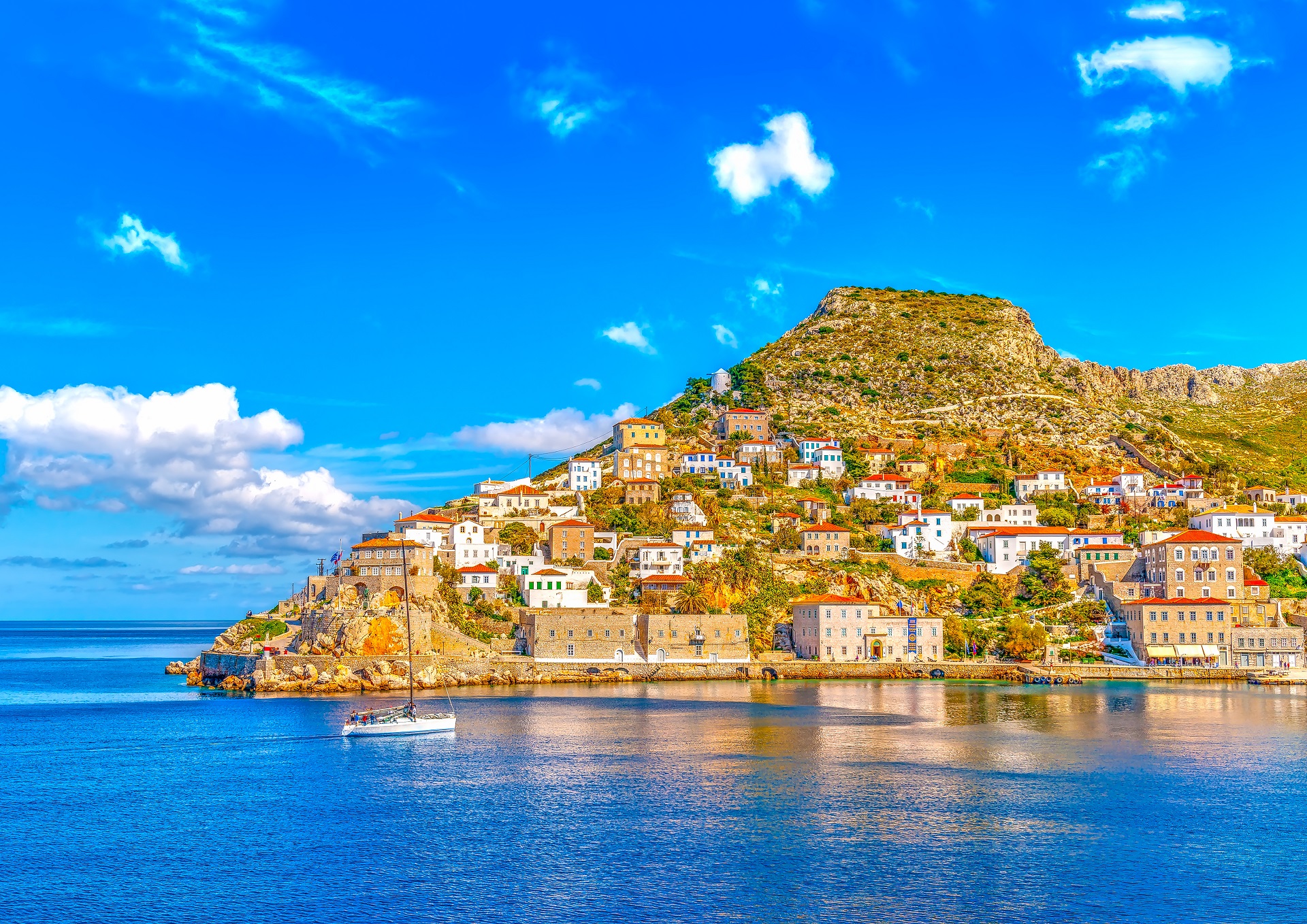
Hydra, built in the shape of an amphitheater on a slope overlooking the Argosaronic Gulf, is one of the most romantic destinations in Greece. Traditional stone mansions, narrow cobblestoned streets, secluded squares and above all the banning of cars and the use of around 500 donkeys as a means of public transportation. All these explain the reason why Hydra preserved its distinctive atmosphere over time.
As you walk along the waterfront, the heart of the town, you will find many places of interest. Monuments, churches, canons, museums, old mansions, statues of famous heroes, the old gunpowder store, shops and cafes will keep you busy. The picturesque winding streets lead you to neighborhoods located at the upper part of the town, as well as to the old neighborhood of Kiafas.
Hydra is also a yachting paradise. Every summer groups of sailing boats moor at the harbor, where they join dozens of sensational motorboats and yachts. It’s worth mentioning that Hydra became famous all over the world thanks to the film “Boy on a Dolphin.” The film was shot on the island in 1957 with Sophia Loren leading the starring role.
Visit the island’s museums to take in a little history
Historical Archive-Museum of Hydra: It showcases rare archive material related to the history, tradition, and culture of the island from 1708-1865. It includes an Archive Section, the Museum Section, and the Library.
Ecclesiastical and Byzantine Museum: Housed in the old Monastery of the Assumption of the Virgin Mary, it houses vestments, holy vessels, elaborately decorated gospel, and icons, mainly from the 18th century.
Annex to the National Historical Museum: The House of Lazaros Kountouriotis operates as an annex of the National Historical Museum. It was donated to the National and Ethnological Society of Greece in 1979 by Kountouriotis’ descendants.
Museum of Post-Byzantine Art and History of Hydra: Housed in the mansion of Georgios Kountouriotis, the museum exhibits personal artifacts of the Kountouriotis family. You may also find exhibits from the modern history of the island.
Explore the island’s beaches
Mandráki: During the War of Independence it was used as a harbor, but today it is an organized beach with excellent water sports facilities.
Bísti: A pebbly beach, where Hydra Diving Centre organizes water sports activities such as diving and kayaking.
Vlychós: A beach covered with pebbles at Vlychos holiday resort.
Spiliá: Ideal for tan-seeking sunbathers.
Limnióniza: Many people consider it as the most beautiful beach on the island. Probably because it takes two hours hiking to reach it, and enjoy a swim in its turquoise water!
Hydronéta: This beach, which lies directly beneath the cannons, has cement decks suitable for sunbathing.
Ayios Nikolaos: A sandy beach, on the west of the island. Access is only possible by water taxi.
